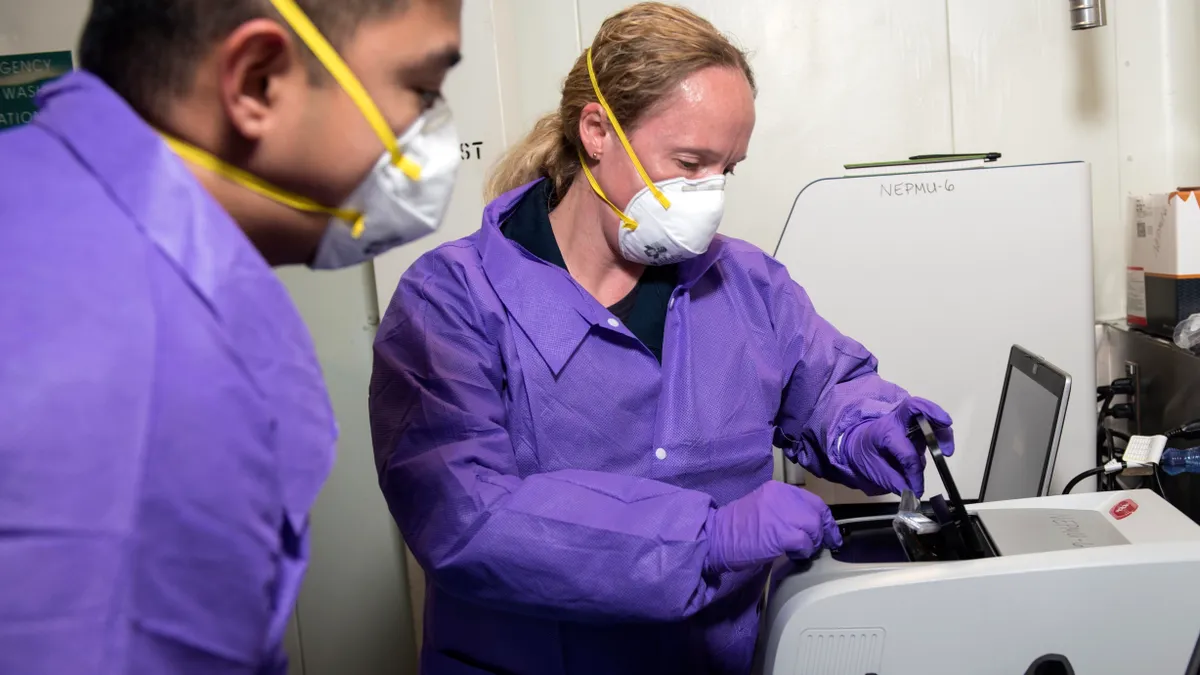Dive Brief:
- More than a quarter of employers surveyed earlier this month by Willis Towers Watson have cut salaries during the COVID-19 pandemic, and most firms that made cuts have not offset them, according to results released June 22. Workforce reductions also are on the rise generally, Willis Towers Watson said in a statement, with one-third of the 543 surveyed organizations reporting layoffs; another 19% said they are either planning or considering such measures.
- While respondents said they expect a portion of employees who have endured furloughs, salary cuts or reduced hours to return to work and have their pay and hours reinstated, respondents also face several "first-time challenges" to reopening safely, the global advisory firm said.
- Nearly half of respondents identified employee safety as a top priority for reopening, with many planning to rely on employee questionnaires and thermal scanners to screen workers. Respondents also said they've reconfigured physical spaces to promote social distancing, closed common areas and plan to require masks.
Dive Insight:
Many employers have centered the re-opening conversation around the health and safety of employees. Sources at EY recently spoke to HR Dive about the need for "people-first" rebuilding strategies that, in addition to making physical changes to the workplace, enable an organization to continue working toward other goals like workforce resilience and upholding company values like diversity and inclusion.
The Willis Towers Watson survey found that some employers plan to rehire laid off workers by the beginning of next year. But such "reboarding" presents its own set of challenges. For example, some employees may be uncomfortable returning to work, and rehiring decisions may be subject to discrimination complaints should there be a perceived bias around protected traits such as age, gender or race, sources previously told HR Dive. And rehiring itself may not repair the eroded trust between an employer and employee caused by a furlough or layoff.
Employers also may need to note employee benefits issues. If an employee has been rehired or brought back from a furlough, the company may need to decide whether to allow them to make new benefits elections, according to a Cozen O'Connor webinar broadcast in May.
Ultimately, employers are likely to follow the lead of local government authorities as they reopen. An April survey by outplacement firm Challenger, Gray & Christmas found that 66% of employers said they would make decisions about reopening based on state and local government information, as well as local scientific experts and internal experts. Thirteen percent of respondents said they would follow the federal government's lead.
The latter point is notable given the extensive recommendations for reopening outlined by the Centers for Disease Control and Prevention. The agency advised employers not to reopen if they have not already implemented several safeguards, including: promotion of hygiene practices like handwashing and wearing a cloth face covering; intensifying procedures for cleaning, disinfection and ventilation; encouraging social distancing; and daily checks of employees' signs and symptoms, among other points.
But state governments have their own requirements for employers to follow, including those around training employees upon their return. In Vermont, for instance, Gov. Phil Scott issued an executive order requiring employers that decide to reopen during Vermont's state of emergency to have employees complete mandatory health and safety training.













